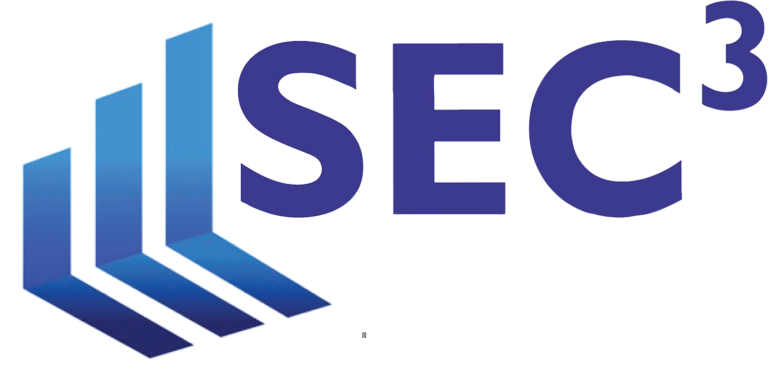Many Commodity Pool Operators (CPOs) are currently in the process of preparing to file the new Form CPO-PQR, which is required by the Commodity Futures Trading Commission (CFTC). Form CPO-PQR is filed with the National Futures Association (NFA). The frequency and extent of reporting on Form CPO-PQR depends on the assets under management (AUM) of a CPO.
CPOs are divided into three categories and should report as follows:
- Small CPOs (i.e. CPOs with less than $150 million in aggregated gross pool AUM as of the close of business on any business day during a calendar year): Must complete Schedule A of the Form annually within 90 days of calendar-year end.
- Mid-sized CPOs (at least $150 million to $1.5 billion in aggregated gross pool AUM as of the close of business on any business day during a calendar year): Must complete Schedules A and B annually within 90 days from calendar year end.
- Large CPOs ($1.5 billion and over in aggregated gross pool AUM as of the close of business on any day during any of the individual quarters): Must complete Schedules A, B, and C quarterly within 60 days of calendar quarter end.
Filing deadlines
Consequently, for CPOs whose registration became effective as of January 1, 2013, the filing schedule is as follows:
- Large CPOs must file by May 30, 2013 for the quarter-ending March 31, 2013.
- Mid-Sized CPOs must file by March 31, 2014 for the year-ending December 31, 2013.
- Small CPOs must file by March 31, 2014 for the year-ending December 31, 2013.
For those CPOs who were already registered on January 1, 2013, the filing schedule is as follows:
- Large CPOs must file by March 1, 2013 with respect to the year-ended December 31, 2012.
- Mid-sized CPOs must file by April 1, 2013 with respect to the year-ended December 31, 2012.
- Small CPOs must file by April 1, 2013 with respect to the year-ended December 31, 2012.
It must be noted, however, that the NFA has incorporated Schedule A of Form CPO-PRQ into its own Form NFA-PQR which is submitted quarterly and, consequently, Schedule A must be filed by all CPOs each quarter and not just on an annual basis. Form NFA-PQR also includes the submission of a Schedule of Investments in addition to the Schedules of Form CPO-PQR. Form NFA-PQR (i.e. Schedule A of CFTC Form CPO-PQR and Schedule of Investments) must be submitted by all CPOs within 60 days from calendar quarter-end, except that the filing for the quarter-ending December 31 must be submitted within 90 days by mid-sized and small CPOs (and not within 60 days) to match the annual filing schedule of Form CPO-PQR.
With respect to filings by mid-sized CPOs, the NFA requires the submission of Schedule A on a quarterly basis but not of Schedule B. Mid-sized CPOs must submit Schedule B to the NFA on a annual basis and not on a quarterly basis. Large CPOs must submit all Schedules A, B and C quarterly and this submission will satisfy both the NFA and the CFTC Forms. Schedule B includes the Schedule of Investments so no separate submission of the Schedule of Investments is necessary.
CPOs that file Form PF with the SEC in lieu of CFTC Form CPO-PQR will be required to file NFA Form PQR (i.e. CFTC Form CPO-PQR Schedule A and a Schedule of Investments), with the NFA on a quarterly basis within 60 days of calendar quarter-end, except for the December 31st quarter report which will be due within 90 days of calendar quarter-end. Schedules B and C are substituted by Form PF and must not be submitted to the NFA.
Calculation of AUM
For purposes of determining the reporting thresholds, the Form CPO-PQR requires the use of “aggregated gross pool assets under management”. To determine the aggregated gross pool AUM, the CPO must aggregate:
- “Parallel pool structures,” which include any structure in which one or more pools pursue substantially the same objective and strategy and invest side-by-side;
- “Parallel managed accounts,” which includes any managed account that, like a parallel pool structure, pursues substantially the same strategy and invests side-by-side with the pools; and
- Master-feeder arrangements.
The concept of “aggregated gross pool assets” used by the CFTC is different from “regulatory assets under management” referenced in the SEC’s Form ADV and Form PF in that, according to instructions given by the NFA, it does not take into account leverage of the pools. NFA’s guidance is that the assets accounted should be the assets as reported in the disclosure documents of a CPO. This means that for leveraged accounts, the assets will not include leverage and for notionally-funded accounts, the assets will include the trading value of the account and not just the funded part.
The CFTC and NFA have also informally communicated to registrants that the AUM will be the assets of pools that the CPO operates in its capacity as a registered CPO, and not the assets of pools for which a CPO is either claiming an exemption or for which it is relying on a self-executing exemption. So, for instance, if a registered CPO manages two commodity pools and it has filed a 4.13(a)(3) de minimis exemption for one of them, while it has not filed such an exemption for the other, only the assets of the second pool for which no exemption was filed will count.
In particular, assets that are counted for purposes of Form CPO-PQR are assets of:
- Pools for which the CPO operates as a fully registered CPO with full disclosure, reporting or record keeping requirements under the CFTC rules;
- Pools operating under the “Regulation Lite” regime of CFTC Rule 4.7 available to pools offered to Qualified Eligible Persons;
- Pools operating under CFTC Rule 4.12 which provides relief from certain CFTC requirements to pools that trade primarily in securities and limit their commodity interest trading to 10%; and
- Pools operated pursuant to CFTC Advisory 18-96 giving relief from certain disclosure, reporting and record keeping requirements to registered CPOs that operate funds abroad with no US investors and which are not marketed in the US. (See Offshore Commodity Pools: Relief for Certain Registered IPOs.)
On the other hand, assets that are not counted are assets of exempt pools and, in particular, assets of:
- Pools operated pursuant to the deminimis exemption of CFTC Rule 4.13(a)(3); the exemption of CFTC Rule 4.13(a)(1) available to closely-held pools; or the exemption of Rule 4.13(a)(2) available to small pools.
- Pools operated pursuant to the exemption of CFTC Rule 4.5 available to mutual funds and other registered investment companies that trade a deminimis amount of commodity interests.
- Pools operated under Rule 30.4(c) exempting from CFTC registration CPOs of funds located outside the US and exempt under the Investment Company Act of 1940 which trade only foreign futures or foreign options (note that the exemption does not cover trading in swaps) and which have no more than 10% US investors or whose aggregate value held by US investors does not exceed 10%. This is a self-executing exemption.
- Pools operated under Rule 30.5 which meet all the requirements of exemption 30.4(c) described above except the 10% thresholds and which, instead of benefiting from a self-executing exemption, file for an exemption on Form 7-R and appoint an agent for service of process in the U.S.
- Pools operated under Rule 3.10(c)(3) exempting from registration of a CPO located outside the US which operates overseas funds with no US investors that trade commodity interests on US exchanges. This exemption is also self-executing.
Note that assets of pools which are registered investment companies that have registered with the CFTC/NFA as of January 1, 2013 because they were unable to meet the requirements of Rule 4.5 are also not counted in order to determine whether a CPO is a small, mid-sized or large CPO. The assets of such registered investment companies will not be counted for purposes of determining the thresholds until completion of the harmonization process between the CFTC and SEC compliance rules (Proposed Rules – Commodity Futures Trading Commission [pdf]). Such assets will, however, be reported on the Forms since they contain some questions related to exempt pools.
This article was written by Linda Smith, a Managing Director with SEC3 and was originally published by Compliance Complete, a service of Thomson Reuters, at http://accelus.thomsonreuters.com

